My views and opinions of the world, movies, TV, books, and life in general.
Don't wanna be here? Send us removal request.
Text
Burn Notice
The Ultimate Binge Watch
What makes a series great for marathon viewings?
Intro:
Cable networks are full of shows that have run a decade on formulas so predictable they've been run straight into the ground. They're consistent, but often so interchangeable that there's very little merit to marathoning the series. Not to mention you need to start from the beginning if you haven't seen the show before, or you'll be asking questions the whole time about plot or character details from previous seasons. Someone mentions a character who was a big deal in a previous season, the main cast acknowledge them, but if you didn't see that season you're left in the dark. The more a series relies on overarching narratives, the harder it is to catch new viewers up without taking too much time away from the episode.
Then there's Burn Notice. I got turned onto this show by one of my college professors who specialized in video editing. That specialization gave him considerably different tastes in movies & television, which intrigued us. Editing, as he always taught us, was the kind of thing that, when done well, you usually don't notice. Bad editing, by contrast, was generally pretty glaring and distracting. Even non-film-students have opinions about movies that edit action scenes way too fast, or make random cuts in scenes that don't make sense, or when scenes go on way too long, or when the audio over-dubbing is off or glaringly obvious, etc. When we asked him what the best shows were, he told us Burn Notice had some of the best editing he'd seen.
Honestly, I'd seen promos for the show while surfing channels (this was before streaming had really taken off), but it never really stood out to me. However, there was a channel available on my basic college student TV that, in a pretty bold move, would simply broadcast certain shows all day. One day it'd be House, another day, as it so happens, was Burn Notice. You could flip on the channel and just binge a series from 8am until 11pm. Best part, it didn't take up a tab on your laptop or cost money. You didn't get to control where you started, but that's where you really got to appreciate shows that caught you up to speed fast on everything going on.
Why Burn Notice is Great:
Everything you need to know about Burn Notice comes in the first 45 seconds with the intro. Rather than a generic theme song that just shows the cast and highlights of the series, Burn Notice catches you up to speed on the premise, the characters, and all the fun it has to offer. We get a solid grasp on everyone's background, their relationships with our main character Michael Westen, the spy nonsense they get up to, and the show's general sense of humor.
Our Hero:
My name is Michael Westen. I used to be a spy, until....
The Inciting Incident:
(over phone) "We got a burn notice on you. You're blacklisted."
What That Means:
(whistles) When you're burned, you've got nothing. No cash, no credit, no job history.
Our Setting:
You're stuck in whatever city they decide to dump you.
(stirring awake) "Where am I?"
"Miami."
The Main Setup:
You do whatever work comes your way.
EXPLOSION(s)
You rely on anyone still talking to you.
Our Cast:
A trigger-happy ex-girlfriend.
"Should we shoot them?"
An old friend who used to inform on you to the FBI.
"You know spies, buncha bitchy little girls."
Family, too.
"Hey, is that your mom again?"
If you're desperate.
"Someone needs your help, Michael."
Wrapping It All Up:
Bottom line, as long as you're burned, you're not going anywhere.
From there, the episode gives us the need-to-know information on the overarching plot, which moves its way through antagonists as Michael gets closer & closer to finding the people responsible for burning him. Each antagonist feels threatening in their own way, even while they exist simply as an obstacle to get in Michael's path to the truth. Spies are, by nature, cryptic and well-guarded people, not to mention the layers of bureaucracy in any intelligence organization assures us that Michael will be dealing with a lot of obstacles. Over 7 seasons, with all the progress Michael makes, the opening intro changes only slightly, as relationships evolve, but the script above adds only a single new sentence (for a new character added halfway through).
Then there's the recaps. They'll catch you up on Michael's current obstacle and any important elements required for the episode. For the amount of humor and voiceovers the series has, the scripts themselves are seemingly written in a way perfect for recaps. You get all the information you need in under a minute, and in short little bits of dialogue that never feel overwhelming. Every new character in an episode gets a short but succinct caption telling you what you need to know about them. It's truly remarkable how everything in the show feels planned for both recaps and for new viewers to immediately get up to speed.
Other Reasons to Watch:
Michael's voiceovers are both informative and a frequently hilarious glimpse into the mind of a spy. Best of all, as skilled and even omnipotent as Michael can seem sometimes, his voiceovers are delivered flat and dry, even at his own expense. Michael's inner spy monologue is always on, and it remains objective to his situation. When things are going well, it makes him look like a master spy. When things aren't going well, it makes you realize how hard being a spy frequently is. Michael Westen is nothing like James Bond, trading in tuxedos and endless romantic conquests for beige suits and a woman who constantly pushes his buttons in the most playfully irritating ways. The point of a spy is not to be flashy, but to blend in with your surroundings, wherever that may be. Michael is brilliantly nondescript, the kind of guy who looks like he could be from pretty much anywhere. This allows him to melt into dozens of different cover identities, depending on what the job requires. Best of all, he avoids allegations of being too good at everything in almost every scene. Between his romantic history with Fiona, Sam's constant playful ribbing, and his mother's PhD in manipulating her estranged son into coming by the house, Michael's weaknesses are on full display in every episode.
Let's talk about the rest of the cast. Gabrielle Anwar provides our daily recommended dose of C4 as ex-IRA Fiona Glenanne. She's like a femme fatale, but worse, she wants to talk about your relationship. She's beautiful, charming, excels at infiltration, sabotage, and reminding Michael there's a much easier option than his usual "nobody dies" moral code. Their chemistry is electric, in large part due to how much Michael tries to fight against it.
Bruce Campbell is a legend in his own right, but the washed-up, functioning alcoholic, Navy SEAL Sam Axe might be his most iconic character after Ash Williams. Sam can shoot, Sam can plant bugs, but above all, Sam can sell himself as anyone he needs to be, provided they go by the name Chuck Finley. If nothing else, Burn Notice could be a 112-hour Ted Talk on the magnetic charisma of Bruce Campbell. Sam and Fi have a fantastic chemistry of their own, having great dislike for the other and the way they operate, but putting those differences aside for Michael.
Then there's Madeline West, Michael's estranged hypochondriac mother. For a woman who barely leaves the house, Maddie is a chain-smoking force to be reckoned with. On the rare occasions she gets involved in a job, she will blow you away with how effective she can be, whether it's infiltration, interrogation, or straight-up intimidation. She's also an ever-present reminder of the life Michael left behind him when he joined the army. For all the things Michael excels at handling, his own past is his eternal Achilles Heel.
Let's talk about the team itself. The Burn Notice crew run a tight operation, even when things go wrong. Which they always do. And yet they can pivot and adjust their plans on the fly to come out on top. It's magical to see. Michael Westen could do whatever missions Jack Bauer or James Bond do, but I would not trust either of them to do what Michael Westen does. They are the ones I want coming to my rescue. Their success rate is incredible, without ever making an op feel boring or predictable. Some of the payoffs for the scumbags Michael & Co deal with on jobs are so beautiful, you'll come back to see them again & again.
You know what most shows don't spring for these days? Explosions. Real explosions. That car, that house, or that boat over there is gonna blow up. Burn Notice is almost entirely analog, using no CGI except on exceptionally rare occasions throughout its seven-season run. Make no mistake, every episode will have action, fire, and/or explosions. Despite Michael's best attempts to resolve every job without violence. If you're a connoisseur of old-school car chases, fight scenes, and shootouts, you will be well-fed on this series. Best of all, Jeffrey Donovan (Michael Westen) does a large deal of his own stunts, including fight scenes and jumping a guard rail with an explosion behind him. It's a cornucopia of lost arts in the medium of television. They simply don't make shows like Burn Notice anymore, and the old shows comparable to it lack its rewatch and pickup value. Basically, the show is a hidden gem that deserves to be remembered.
6 notes
·
View notes
Text

Great Characters: Trick (Lost Girl)
The show may be somewhat under the radar, but the character of Fitzpatrick McCorrigan (better known as "Trick") exists as one of the best examples of an "Overpowered Character" in any media.

Quick background, Lost Girl resides in one of those "The Supernatural & Mythological Exist, But Hidden From Humans" kind of universes. The world of the Fae has Succubi, Shifters, Valkyries, Djinn, Garuda, Redcaps, Selkies, etc, etc. Magic is real, curses suck, and puberty might turn you into a feral monster.
Trick is an original Fae known as a "Blood Sage", and his powers are, to put it lightly, basically Godlike. Anything Trick writes in his own blood becomes reality. He can literally rewrite the world as he pleases. The only limits to these powers are basically how much he can write before he passes out from blood loss. Trick wrote the very laws that govern the Fae, ending the war between factions that had waged for centuries. So, why does one of the most powerful Fae in existence run a tavern and never use his powers?
From the very first time we meet Trick (episode 1), there are hints that he is respected by many of the leaders among the Fae, but we see absolutely no hint of any powers. Instead we are given a warm & friendly barkeep operating the Dal Riata, a pub that exists as a safe & neutral territory for both factions of the Fae, the Light and the Dark. Patrons from all walks of life can come by for a drink, a game of pool, and even Bingo on some nights. Only a select few have any clue that the man pouring the drinks on La Shoshain is the very same King they are celebrating, and that's the way Trick prefers it.
Mythologically, there are multiple reasons an immortal demigod might live a powerless life among mortals. They could be testing followers who think no one is watching. They could be stripped of their powers and forced to survive without them. They could be reincarnated into a mortal being. They could just be bored and doing it for sh*ts & giggles.
Trick isn't testing anyone. His powers are as strong as they were when he was Monarch of the Fae. The only changes made to his appearance are that he no longer wears a crown, he has retained his immortality, and does nothing to hide his age. Above all, none of this is a joke to him.
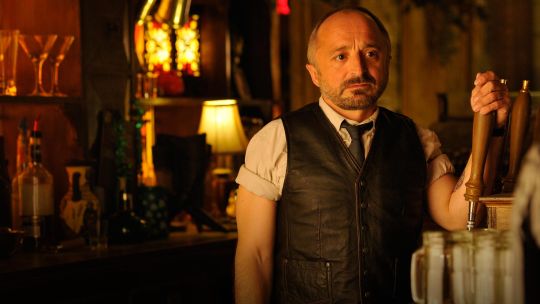
The reveal & reason for Trick's chosen lifestyle is brilliant in its simplicity.
During the first season finale, Trick's renegade daughter Aoife tries to murder Bo, her daughter and Trick's granddaughter. Kenzi, Bo's best friend (a human among the Fae), comes to Trick and demands he help her. She knows who Trick is, she knows he can change Bo's fate with ease. Trick refuses. When Kenzi demands to know why, Trick shows her.
He begins pulling books off a shelf; two, three at a time, and putting them in front of Kenzi. Over a dozen volumes in all. All of them filled with Trick's blood. Filled with his changes, his corrections, his attempts to bring peace to the Fae. The end result is the world as it exists, right now. Trick is living in the world he crafted, line by line, word by word, change by change. We are faced with the literal weight of the countless attempts Trick has made over hundreds, maybe even thousands of years, to tackle the complexities of life. Trick can rewrite a person to end a quarrel, but that animosity will be directed to someone else. He can stop a disaster, but it causes a different disaster. He can erase someone from existence, but their lingering absence will still ripple in the lives of those they left behind. No matter how carefully, or thoroughly, or specifically Trick writes, no matter how many different ways he might write it or rewrite it, he always ends up causing the very thing he has sought to prevent; conflict. Trick's immortal life and godlike powers have only shown him how helpless he truly is.
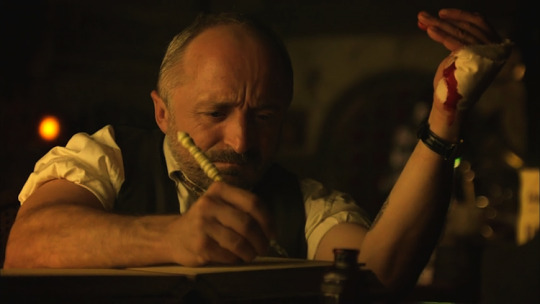
The idea behind Trick's current status is an effort to solve problems & disputes without magic. By putting in the work, taking the time, and committing himself to helping those who need it; the right way. Wayward souls with nowhere else to go, confused individuals just learning about their Fae ancestry, or just any Fae looking for a safe place to eat, drink, and/or be merry for a night. When you need someone, Trick is there with shelter, a pint, and a willingness to listen. Its truly amazing how much difference that can make in a person's life.
It's somewhat reminiscent of The Stonecutter. Quick version for anyone unfamiliar with the story:
A lowly stonecutter works all day, wishing he were a rich lord. Suddenly, his wish is granted, and he finds himself so. He revels in the joys of being a Lord, until the day comes when he sees a powerful king. He wishes to be a king, so as to bow to no one. Suddenly, his wish is granted, and he finds himself king of a great nation. One day, while sitting on his throne, he sees the hot sun overhead, forcing him to seek cover & shade. Wishing to be the sun, he suddenly finds himself to be so. Taking joy in bearing down his heat on all below him, he is angered to have his rays blocked by a cloud. He wishes to be a cloud, so as to blot out even the powerful sun. Suddenly, his wish is granted. He now holds power over even the sun, and can pour down rain to destroy all beneath him, until the day comes that a strong wind blows him away. Wishing to be such a breeze, he suddenly finds that wish has come true. He becomes a powerful wind to blow away anything in his path, until he comes to a massive stone he cannot budge. He wishes to be such a stone, and his wish is granted. He stands as an immovable object, the unyielding bane of all the elements. Until one day, he looks down, and sees himself being chipped away by a lowly stonecutter.
Don't knock a humble life. Trick remains one of my favorite characters in large part due to Rick Howland's performance, which is unfailingly kind, lovable, and wise. There are also utterly hilarious moments such as Trick passing out drunk in a bathtub with a tie around his head, making bar jokes, or being asked painfully awkward questions about aspects of sexual intercourse by his succubus granddaughter. He always does his best, and we treasure him for it, but the fear in the eyes of this former God being asked some of these questions is just priceless.
#lost girl#fae#faemily#trick#rick howland#syfy#great characters#character#op character#blood king#god among mortals#immortal#immortality
17 notes
·
View notes
Video
youtube
This post is years late, but it took a while to find this scene in high definition.
Katherine Hale was first introduced in season 5 as the widow of late Crime Boss Grady Hale, who was by all accounts a violent savage. We are told Katherine is, in fact, worse. It’s a remarkable feat that we come to believe this so readily, as there is so little direct evidence to point in this direction for quite some time. But there’s something about the way she says everything in her “sweet little grandma” voice, scrunching her face as she does it, that immediately puts your survival instincts on edge. Women do not end up in Katherine Hale’s position by being sweet, innocent, or passive. Most mob wives we see in media are cold, indifferent, and give nothing to anyone in law enforcement unless they really have a grudge against their husbands. They are seen as a weak point or even just collateral damage for taking down a mob organization. Not Katherine Hale.
I’ve said Justified has great examples of how to make a villain terrifying without showing them directly killing people, being violent, or even holding a weapon. Katherine Hale is, along with her lover Avery Markham, one of the very best examples of this. Something about the way she delights in twisting the knife of DA Vasquez’ failures to have her convicted. Something about the way she can call him “little beaner hobbit shitbird” to his face with a smile. This dance of passive-aggressive banter tells us a lot. It paints this very clear picture that she is not the collateral, she is the target. She knows she can say all this and do all this because none of it would be enough to put her away. She’s never allowed there to be enough of anything to put her away. She has the cunning to stay untouchable for this long and the power to have anyone who tries to take her down killed. She is a smart criminal, a vicious one, and she enjoys it.
Katherine’s greatest weapon is her people skills. The aura of menace underneath her sweet exterior is enough to make most ordinary people keep their distance. In criminals, it works to weed out the ones who can handle the job they’re given, from the ones who will crack under pressure. As someone who lavishes herself in the wealthy lifestyle of a successful crime empire, Katherine understands the kinds of things people become criminals for. What few background hints we’re given about her suggests she wasn’t born into power, beauty, or wealth. She will not let go of any of them easily. She knows what it takes, especially for women to make it in this life. You have to use every weapon you’re given, without hesitation. It’s not enough to be smart, or pretty, or ruthless; you have to be all three at all times.
Having a partner makes an unmistakable difference. Even though we never see him, Grady’s reputation leads us to believe he was very much a violent brute of a criminal. He was nevertheless smart enough to trust Katherine with running his crime empire behind the scenes, operating as the wild & savage face of the organization. While there were marital discrepancies between Katherine and Grady’s partner Avery Markham, Katherine still holds a flame for Grady and will relentlessly pursue those responsible for his death in prison. They were partners, and they worked well together. And whoever ratted on Grady turned Katherine’s life to shit. We have to take her word for it, given she still seems to live a pretty cushy lifestyle, but given it’s the only thing Katherine gets sincerely vocally angry about, it’s in our best interest to believe her. Considering what we’ve seen her do to people she doesn’t care about, it makes sense why Dixie Mafia cockroach Wynn Duffy fears Katherine Hale with every fiber of his being. More than anyone else in the world, he has the right to be afraid of her.
While Katherine is clearly happiest running things behind the scenes, she’s far from helpless in violent situations. She plays people’s preconceptions of her as too old, too spoiled, too pretty, and too material against them. It’s usually their last mistake. The problem with most criminals who reach the top of the ladder is that they stop handling their own dirty work. They have people to do that for them. Katherine Hale isn’t sitting on top of a criminal empire anymore. She operates as a criminal consultant, letting her history of running Grady Hale’s enterprises speak for themselves, although many still foolishly believe Grady was the one in charge. This means she has no underlings, no bodyguards, and no backup. She relies on the security measures put in place by her associates, but she always comes prepared for if things should go wrong. In the violent encounters she’s been in, she handles herself with a cold precision that has guaranteed she’ll be the last one standing in many a struggle. We’ve seen her execute a former soldier, pull out her cell phone, and politely call for room service in French, not even mildly bothered by the carnage around her. Even in her death at the hands of Mikey Cosmotapolis, she shot him five times at point-blank range, four of those times while he was grappling her. She died when he crushes her windpipe with one hard chop, and Mikey succumbed to his much bloodier, more painful wounds moments later.
I’ll be honest, I still flinch when I see Mary Steenburgen in other movies and shows. This character had that much of an impact on me.
#justified#katherine hale#crime boss#mob wife#mary steenburgen#great character#great villain#gangster#criminal#great death scene#legend
6 notes
·
View notes
Photo
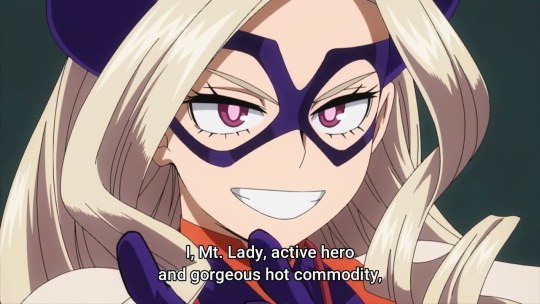
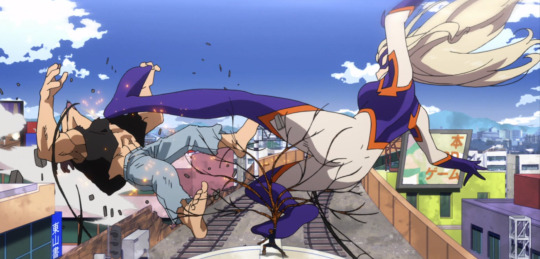
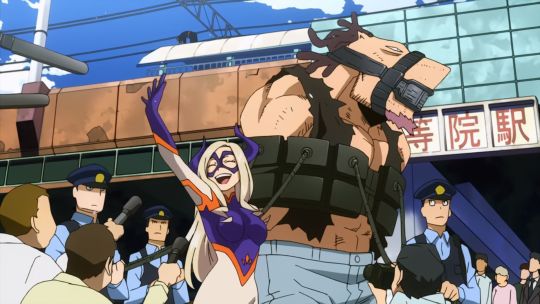
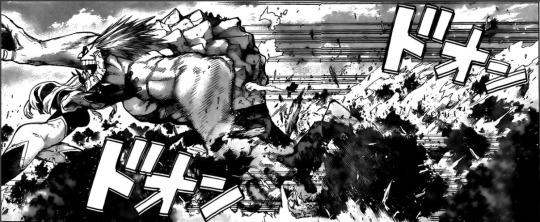
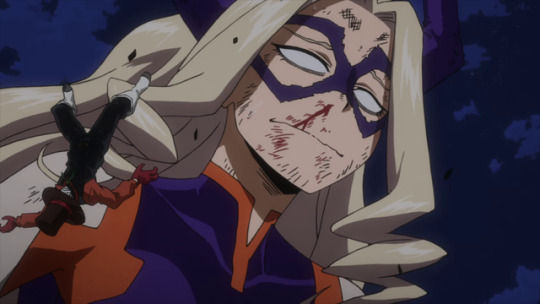
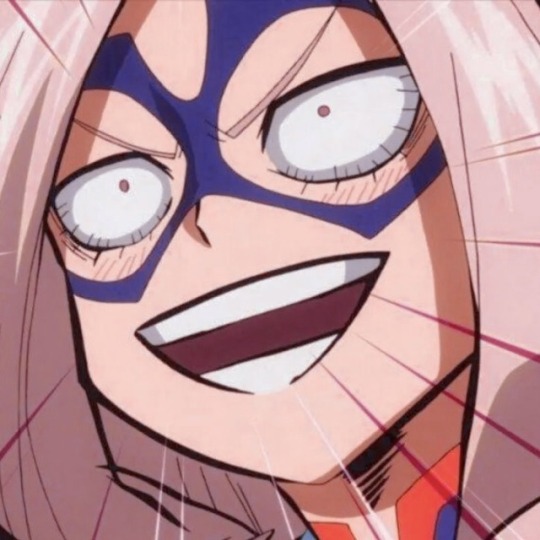
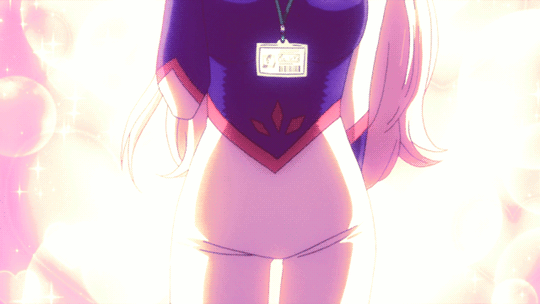

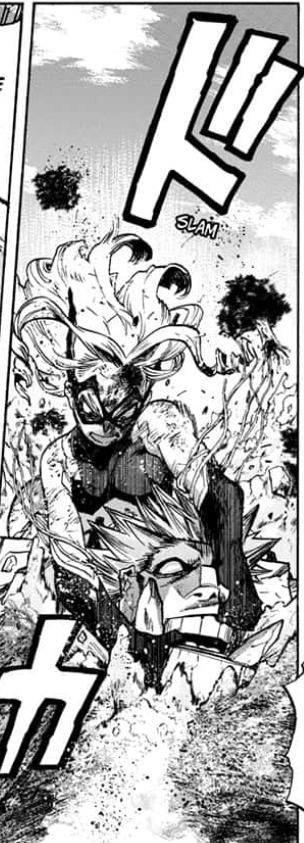
Great Characters: Yu Takeyama, aka “Mt. Lady” (My Hero Academia)
The longer I read My Hero Academia, the more it becomes clear I could write one of these essays on literally almost every character in the series. The writing is that good. With the release of the latest volume in English, we got to see a lot of a character who’s been around since the very first chapter but has proven very difficult to get a read on. The Giant Hero, Mt. Lady. Even for MHA, she’s such an unconventional character, I thought she merited a post.
With this in mind:
****SPOILERS****
Mt. Lady (real name Yu Takeyama) is not what comes to mind when we think of a great hero. Quite the opposite, her behavior often paints her to be the model of a terrible hero. Vain, petty, cheap, lazy; her introduction to both the series and the Pro Hero World was to killsteal another hero. Literally appearing out of nowhere to blindside the villain, she then turned on the charm to her audience/onlookers watching the fight take place. Her definitive knockout, impressive Quirk, coupled with the fact she’s a hot 20-something who knows how to flaunt her sex appeal, made her an instant name in the Pro Hero circuit. In addition, it established the joke that would pretty much define her character for the rest of the series; a hero with Gigantism who is never above picking the low-hanging fruit.
All of her future appearances would go on to drive this point home. At the Sports Festival, she shamelessly flirts with a vendor for free food in front of her fellow heroes. A student who interns at her agency spends most of it cleaning her apartment and doing chores while she lounges on a couch reading magazines. In a TV spot with heroine Midnight, a discussion of censorship in hero costumes ends up a televised catfight when Mt. Lady takes some jabs at Midnight’s age & supposed “sex appeal”. On a high-value job, she whines & complains about having to detain gross semi-human experiments while other heroes confront the important bad guys. Literally every appearance seems to further drive home the point that Mt. Lady is just a vapid, self-obsessed freeloader skating by on her looks & other people’s hard work.
What seems to always pass under people’s radar, however, are some tendencies towards genuine heroic behavior during every incident she finds herself involved in. The first chapter ends with a situation that no available heroes (including Mt. Lady) can resolve, however, when a hero does appear and blast the villain away, Mt. Lady protects both the civilians and other heroes from the resulting shockwave. Collateral control, not a flashy part of the Pro Hero lifestyle, but an essential one. When her entire squad gets taken down in a single blast by a villain leagues above their ability to face, she makes a surprise reappearance to prevent a villain from escaping by catching him with her face. As she falls back into unconsciousness with a newly received bloody nose, she mumbles, “mission is all that matters”. Most recently & impressively, we watched Mt. Lady go multiple rounds with Gigantomachia. A behemoth of a villain with a version of her own Gigantism Quirk, as well as six other Quirks, all specifically chosen to allow him to bulldoze through anything & everything in his path. Despite this, Mt. Lady managed three accomplishments that not a single one of the hundreds of other Pro Heroes assembled against the Walking Calamity achieved. She stood her ground. She slowed him down. She came back for more. None of these sound impressive until one considers that the greatest achievement any other Pro Hero accomplished against Big G was surviving. She lasted longer than the hundreds of other Pro Heroes and the 20+ populated cities that also stood in Gigantomachia’s way. Mt. Lady got rag-dolled by the big lug twice before she finally went down.
This fight allows us to finally see the heroic side of Mt. Lady that I’m starting to think has always been there, but hidden under quite a lot of genuine petty behavior. One thing that stands out among of all her appearances doing actual hero work is that she always does her job. Other Pros might reprimand her behavior, her attitude, and her shamelessness, but they can’t criticize her work. She shows that “Plus Ultra” mentality recognized in some of the greatest heroes. That mindset of continuing to fight even when you should probably stay down. Looking back, all of her contributions make an important impact, save lives, and allow the mission to succeed. Even when she doesn’t receive much credit. What that says to me is that Mt. Lady is actually more focused on doing her job than just becoming famous.
That’s what makes the character so interesting; this combination of seemingly contradictory behaviors that nevertheless coexist with each other. I’ve seen other posts calling this inconsistent characterization, but both sides have been present in the character since chapter 1. Mt. Lady is petty, but she is also reliable. She is heroic, but she is also lazy. She is selfish, but she is also cooperative. She is strong, but she is also shameless. What we really have here is a multi-dimensional female character who knows how to play the game of being a Pro Hero. Being strong is fine, but if you can’t make a name for yourself you’ll probably end up a sidekick. Being sexy is fine, but if your work suffers as a result the time will come when you may have to pick one or the other. Dealing with the media is an authentic aspect of heroism that is often overlooked. In a society where being a superhero is a legitimate career, newspapers won’t treat every hero like Superman or every villain like the Joker. Mt. Lady’s debut was noteworthy because, while the villain was a simple mugger, his Quirk was flashy and caught people’s attention. As capable as the other Pro Hero, Kamui Woods, might have been, his Quirk was a poor match for a villain with Gigantism. Resolving the situation immediately may not have been polite, but it gave Mt. Lady the chance to showcase all her talents at once, exactly what one wants for their introduction.
I think what we’re looking at is a female character who manages to showcase both heroism & realism. Mt. Lady acts like a hero, as well as like an early-20s young woman. She embraces her sex appeal unlike so many other heroines that are written to avoid the subject like the plague. There’s this antiquated idea that if a Woman Character displays an interest in sex, it lessens them, somehow. That if a member of the female gender is to be the hero, she must be virginal, prudish, and never swayed by base desires. She must be sexy, but not have sex. On the other hand, Man Characters having sex just makes them seem better (as long as that sex is heterosexual sex with a hot woman readers also want to sleep with). It’s a double-standard we have yet to rid ourselves of. We don’t hold Mt. Lady to any of these ridiculous standards because she flaunts her sex appeal like a reality TV star instead of shunning it like a Final Girl. She’s in a relationship with one of her fellow Pro Heroes, the very same one she stole the spotlight from in her debut. Such a relationship changes the questions readers ask. Instead of, “ooh, is it going to be spicy?”, we ask, “why would he date the one person he should dislike most?”. It creates these nagging thoughts we may not get resolutions for, because when do we ever really understand what’s going on in a celebrity romance? I for one think maybe Kamui Woods is starting to see both the heroic aspects of Mt. Lady and the advantages of playing to media attention. As Mt. Lady demonstrates, heroes can do both.
I am so unbelievably psyched to see Mt. Lady vs Gigantomachia when the anime finally gets to it. Gonna be awesome.
#great characters#rant#character#mt lady#mount lady#mha#my hero academia#mt. lady#yu takeyama#female characters#sex appeal#heroes can do both#superhero#hero#flawed hero#spoilers
104 notes
·
View notes
Note
What do you think of Merlock in the Ducktales movie?
Remind me, he was the Villain, yes? Unlimited wishes, turned into a giant bird of some sort? Been ages since I thought about that movie!
0 notes
Photo

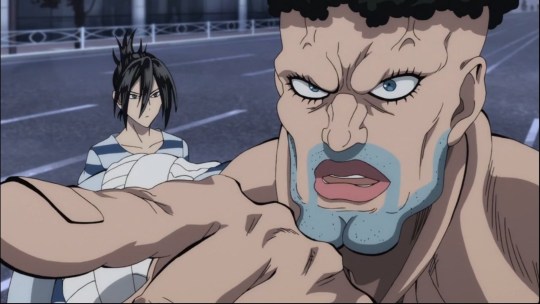

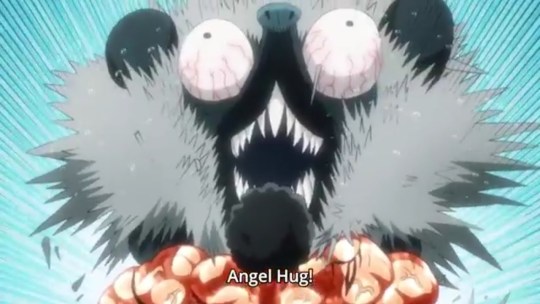
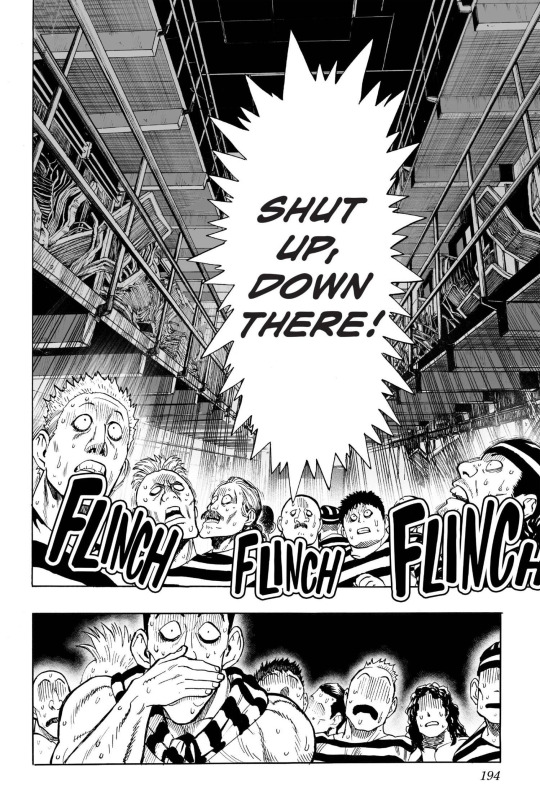
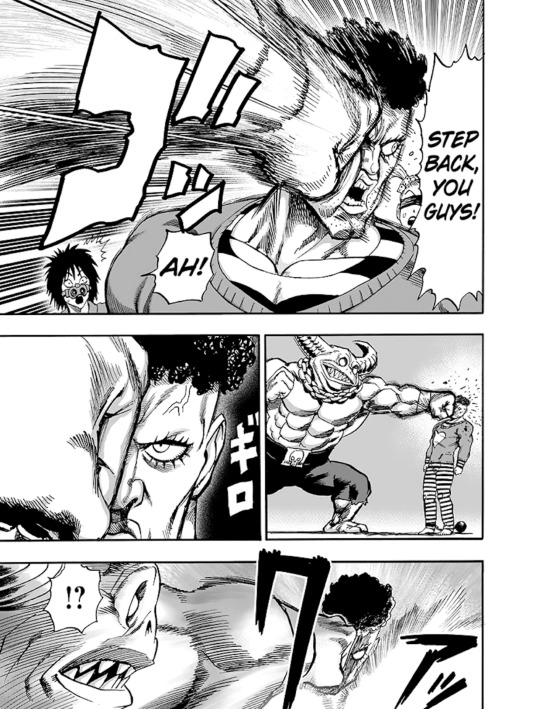

Great Characters: Puri Puri Prisoner (One-Punch Man)
Been wanting to do a piece on this character for a while. This being Pride Month, felt like I finally had the push I needed to put my thoughts down on this character.
**Warning: I’m treading into some uncertain territory here.
The world of One-Punch Man is, to put it in basic terms, an ultra-super-powered universe. Everything exists to serve as a showcase for how bonkers-insanely-powerful our protagonist, the titular “kills everything with one punch hero”, Saitama, is. In this world, if you have a motivation, regardless of how ridiculous it may be, you have an avenue for unlocking superpowers and/or turning into a monster. For a world designed to produce a never-ending supply of the most powerful opponents conceivable to face Saitama, they play pretty fast & loose with regards to what kind of power is possible to achieve in a relatively short period of time. To maintain order in a world where someone can turn into an evil crab monster by eating too much seafood (not kidding), heroes are a necessity. Standing at the top of the Hero Association are the S-Class Heroes, including the #17 Most Powerful Hero in the World, Puri-Puri Prisoner.
Serving a 10,000-year sentence for getting grabby with men, Puri-Puri Prisoner sports a prison uniform for his costume, as he is an actual criminal who spends whatever downtime he has in the maximum security prison designed for the most dangerous human criminals in the world. The costume comes complete with iron ball (pretty much just for aesthetic as it can’t actually slow him down at all) and a hand-knit sweater. His basic “powers”, as they were, are super-strength, speed, and durability; your usual hero package. As with all heroes/monsters pushed to the edge, he can unlock new powers by dramatically developing them on the spot in battle when needed. For Puri-Puri Prisoner, his “transformation”, if you will, is to become so muscular his clothing is torn to shreds, sprout angel wings to fly, and rapidly grow chest hair for armor. I’m not kidding, it’s ridiculous, I love this show.
Now, we see a lot of heroes in this series. A LOT. The gambit of actual heroism demonstrated by these heroes, however, is a mixed bag. For some, being a hero is a job. For others, it’s a noble calling. Some use it as an excuse. Others, it’s just the natural next step when one has acquired incredible power. The higher up the rankings you go, the more you start to see heroes who are here because of their strength and nothing else. We need people who can fight monsters, you have powers. Here’s a job, title, & ranking in the Hero Association, try to keep the collateral to a minimum, okay? Once you make it to the S-Class Heroes, we come to see that almost all of them are solely in it for themselves. They have their own goals and motivations that run the moral spectrum from “I’m the most powerful in my chosen field” to “I’m here because they make me” to “I’m here out of sheer boredom” to “I’m here because I’m hungry”. Again, not kidding, S-Class #10 Hero Pig God is literally just a guy who eats everything. As far as what spurs them to action, it’s usually because they’re ordered to by the Hero Association. Hell, a few of the highest ranked don’t even bother reporting/responding to the Hero Association, including the #1 Hero Blast, and just come & go when they feel like it. At their level, it’s not like the Hero Association can actually make them do anything they don’t want to do. Puri-Puri Prisoner is a notable exception.
Puri-Puri Prisoner is one of the first S-Class Heroes we meet. Over the course of the series, he becomes the most frequently seen S-Class Hero in a combat setting. Whereas most heroes only show up if an enemy is specifically gunning for them, they’re gunning for the enemy, or they’re ordered to show up by the Association, Puri-Puri Prisoner shows up every time a new threat emerges that threatens a man he’s taken a fancy to (which is a lot of men). If he spots one on the television in his cell, he busts out of prison to rescue them, beat the monster, then goes back to prison to resume his sentence. For his efforts, he usually gets a pretty nasty beatdown from the monster and total rejection from the man he’s trying to save. Being the bottom rank of the highest tier of heroes, Puri-Puri Prisoner is often used as an indicator that a monster is a more serious threat than previously projected. Again, the series serves to build up the most unbelievably powerful monsters imaginable to get utterly destroyed by Saitama, so a lot of heroes just get used as stepping stones. As a result, Puri-Puri Prisoner spends a large majority of his screentime getting pretty uniformly trashed in one way or another.
Here’s the thing, though. He still shows up. Puri-Puri Prisoner is one of the only cases we see of a Hero (S-Class or otherwise) who actually fights for something/someone other than himself. Well, technically he shows up to add a new man to his prison harem, but still, he actively shows up to save others. That is surprisingly rare for a series with so many heroes. Let me reiterate; most of these heroes join the association for perks, privilege, power, or just so they can do whatever they want. They fight because, in typical anime fashion, the fight interests them. If they save people, it’s basically a way for them to show off their skills to the monster before they unceremoniously destroy it, or because that person is significant to them (pupil, family, etc). One way or another, it’s always about them. Puri-Puri Prisoner is the major exception, and that is worth talking about. For Puri-Puri Prisoner, it’s always about someone else. He might take a fancy to them, but joining his prison harem is not a requirement for him to save them. Hell, he’s one of the only heroes who tries to save people who have been monsterfied, as opposed to just flipping the “no choice, have to kill them” switch.
He exists as a strange take on the concepts of Courtly Love. A combination of “The Ennobling Power of Love”, “Unfulfilled Desire”, and “Love for Love’s Sake”. Puri-Puri Prisoner’s heroic actions are inspired by the love, which frees him from his (literal) prison to be a savior (or try, anyway). This love that drives him to act is never reciprocated, but it doesn’t stop him from feeling it and acting upon it. Why does he still do it? Because love is its own reward. He is very much defined by this love, often to comedic effect, but it carries actual weight. Puri-Puri Prisoner‘s love is never seen as a weakness in combat, but the source of his power & development. He will face monsters, take punishment, and endure whatever he needs to for his love. The man sees love everywhere and has turned it into his own brand of absurd superpowers.
Let’s address the elephant in the room. No, not that one (get your minds out of the gutter). The character is a take on the gay prisoner stereotype and the reason he’s in prison for 10,000 years is for “getting grabby with men”. On a very basic level, I’m singing praises for a predator (gags). That’s an aspect of the character that shouldn’t be overlooked. Here’s the thing, Puri-Puri Prisoner recognizes it. As stated previously, Puri-Puri Prisoner spends all of his downtime in literally a prison cell. Not a mansion, not a lair, not a deluxe suite, not an apartment building, a cell in a maximum security prison. A prison cell, mind you, that he can break out of whenever he wants. So why doesn’t he? Because he understands that he can serve a heroic purpose even as an imprisoned criminal. The rule of this prison for the most dangerous humans is that “only the boss is strong enough to break out”. All the rest of these violent maniacs are too scared of him to even try. Hell, even when he does his thing and breaks out to go collect another cute criminal, the other prisoners won’t try to escape, because they know he’ll come looking for them and he will find them. Puri-Puri Prisoner is one of the only heroes who manages to be on duty even when he’s off-duty. His presence in the prison puts the other criminals on their best behavior and prevents breakouts & escapes better than any security system. Whereas all the other S-Class Heroes live pretty comfy lives due to their status, Puri-Puri Prisoner instead voluntarily chooses to serve his time, keep an eye on interred criminals, and live a life without any luxuries besides the occasional hand-knit sweater from his prison boyfriend. He might be viewed as the laughingstock of Class-S, but he actually serves a significant day-to-day purpose in society, instead of just coasting on his existence as an overpriced superweapon.
Next, let’s talk about how the world views Puri-Puri Prisoner. Because it isn’t nicely. For a hero who’s always one of the first to arrive on the scene (reiterating once again, from prison), everyone treats him like a joke and a failure. In a world where humanity is on the brink of destruction pretty much weekly, the only thing that matters to most people when it comes to heroes is whether or not they win. The Disaster Level System escalates from Mild Nuisance to Dangerous Threat to Wrecks S-Class Heroes to World-Destroyer to LITERAL GOD. If you fight but get your ass handed to you, you suck and you should quit calling yourself a hero. As for how other heroes treat him, it’s not the same, but it’s not better. Puri-Puri Prisoner will show up to care for wounded heroes, on the sole basis that he likes them. Their universal response is to reject him and flee for comedic effect. This is played for laughs, but we get more than a couple moments of seeing how much this really affects Puri-Puri Prisoner. He fights for these heroes, bleeds for them, takes an obscene amount of punishment for them, and cares for them; but they just see him as this gross goofy Pepe Le Pew. For the amount of people he saves, no one ever treats him like a hero, because this world only sees heroes as people who win. As both the lowest-ranked of the most impressive people in the world and a criminal serving time in a jail that has no genuine capability of holding him, Puri-Puri Prisoner looks for all intensive purposes like a loser.
He still shows up. In a world where the average life expectancy of a person without powers is realistically measured in seconds, it needs more heroes like Puri-Puri Prisoner who fight for them. Not because they have to, not because someone orders them to, not because it gives them any benefit. Heroes who fight for others because they want to defend the defenseless. The definition of a hero (for me, anyway) is “one who puts the needs of others before themselves”. By that definition, Puri-Puri Prisoner absolutely qualifies as a hero, and deserves some recognition. He’s definitely not an ideal model for heroic behavior (again, again, he’s in prison for a reason), but he’s a true hero in spirit. He fights, even if he knows he can’t win, for the sake of others. He does it in really goofy ways and some of his powers are outright ridiculous, but everything he does, he does to keep the world safe. And by golly, the man hugged a porcupine monster to death because he thought the civilians yelling common sense battle advice (aka, stop fighting a porcupine bare-naked) were cheering him on. It’s a ludicrous take on “The Power of Love” anime character and I friggin’ love it.
#great character#rant#puri puri prisoner#one punch man#hero#the power of love#superpowers#i broke out of prison to save you
53 notes
·
View notes
Photo
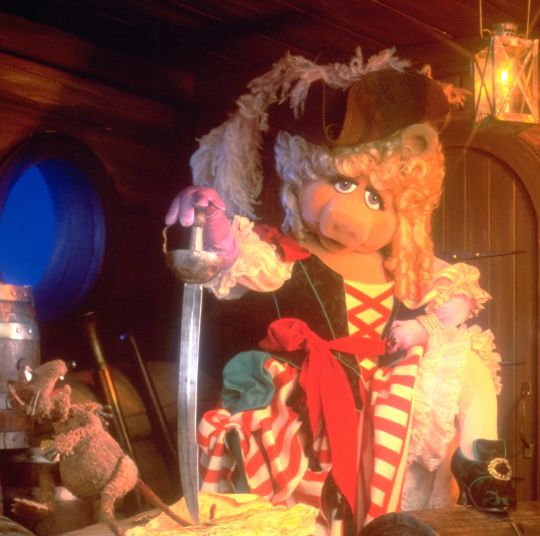
The Law of Piggy
Anyone else ever struggle with writing good female characters? Like, you’re trying to write them, you think you’ve written some, and then you realize you haven’t actually? Like, you look back over it and realize you’ve barely given her any lines, or the scenes that are supposed to be about her aren’t actually about her, or you’ve actually written her into a damsel in distress role without noticing it?
Then you try and fix it? You ask yourself “what makes a strong female character?”, but you can’t answer it because you don’t know? So you ask some lady friends how to write strong female characters, but they don’t seem to have the answers either? No one seems to have the answers you’re looking for? So what do you do?
A weird idea hit me while listening to a podcast. The hosts were jokingly suggesting movies that should get remade with the Muppets. One of the most important questions that occurred to me would be whether or not it has a role for Miss Piggy. She may not be the “Main Muppet”, but you absolutely cannot have the Muppets without Miss Piggy. That mindset of having a female character that is essential to any story is pretty much what I was looking for, but I doubted it was that simple.
Then I thought, even more important than just having a role for Miss Piggy, is it a role she would want? Miss Piggy is, quite intentionally, a super diva and unstoppable ham (that basically being the joke for her character). As such, whatever role she’s going to play would have to meet her demands. Is the character important? Do they get more than one scene? Do they have plenty of lines? These are all things Miss Piggy would require from a role. Does the character die? More importantly, does the character die pointlessly? Does the character appear in scenes but not have lines? Those are things Miss Piggy would not stand for, under any circumstances.
I was laughing at the idea while I worked it out. I mean, it kinda works, but there must be a catch, right? Like, it works up to a certain point, but then there’s some element I’m missing that nulls the whole thing, right? But the more I applied it to characters, the more useful it proved as a proofreading tool. The main asset was the fact that Miss Piggy has a very clearly defined personality as an actress & performer. It basically boils down to, “I am important, and if anyone has a problem with that, TOUGH BEANS”. If she likes a role, she gets that role. If she doesn’t like a role, she doesn’t take that role. If she doesn’t get a role in a movie, you get punched. And if Miss Piggy isn’t in the movie, Kermit isn’t in the movie, and then the dominoes start to fall from there.
Furthermore, there is no arguing with her about it. No explaining why the role is more important than she thinks it is. You’re not going to change Miss Piggy’s mind, braver men have tried and failed miserably to do so. Miss Piggy has her own criteria for good roles and that’s that. If you mansplain to her, you get walloped. If Miss Piggy is going to be in a scene, she is going to have dialogue. If Miss Piggy is going to have dialogue, it is going to be important. If Miss Piggy dies, it had better be an epic, dramatic death complete with a full monologue and a kiss from Kermit while everyone else is shutting up to listen to her last breaths. Or she won’t do it.
Now, I’m not suggesting you write every female character as Miss Piggy. That would be terrifying. But if you are asking yourself the question “is this a good, strong, important female character role?”, the Law of Piggy is a surprisingly effective proofreading tool.
9 notes
·
View notes
Note
What would Hak Foo look for in a potential significant other?
Most likely, a significant otter.
0 notes
Note
What do you think Tohru's (JCA) foot size is?
BIG.
0 notes
Note
What is your opinion on Hak Foo?
I think he’s a fantastically fun character who shines in every appearance and I wish more henchman had his level of individuality. I don’t think he qualifies for a whole rant due to lack of character development, but he’s definitely an extremely fun bad guy.
I would love to create a D&D version of the character if I could just find (or create) a list of all his named attacks.
1 note
·
View note
Photo
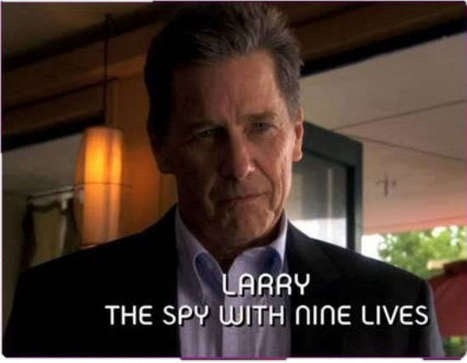
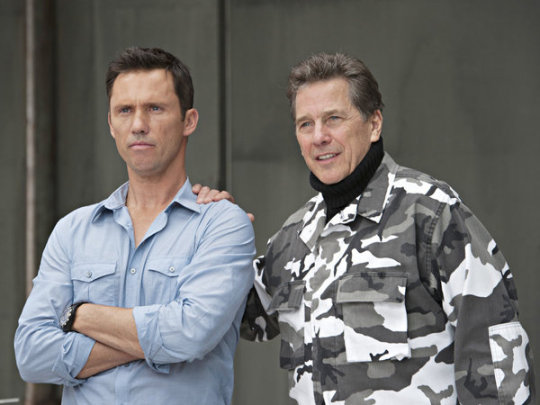
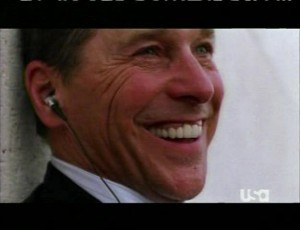
Great Characters: Larry Sizemore, aka “Dead Larry” (Burn Notice)
You can tell a lot about someone from the way they smile. People smile when things are going their way. If they work in the intelligence field, a business of waiting, listening, and frequent inconveniences; it tells you they probably don’t do things by the book. If they are an undead spy doing mercenary work for the highest bidder, they probably enjoy their work a bit too much. If they call targets “Dead-ees” and chuckle when admiring a dead cartel hitman bleeding out on your couch, they probably kill a lot of people. Most importantly, if they smile with a weapon pointed at you, they have plans much worse than killing you in mind.
Larry Sizemore, aka “The Spy With Nine Lives”, is a former Marine turned contract killer after “retiring” from the service by faking his death. 15 servicemen witnessed him walk into an oil refinery before it exploded and Larry was declared K.I.A. (Killed In Action). This assessment was proven to be inaccurate when Larry resurfaced and tried to bring his former protégé, Michael Westen, back into business with him. Michael, now a blacklisted spy without an agency, does his best to keep Larry at a distance, thwart his plans, and minimize the excessive collateral damage Larry defaults into when things don’t go according to plan. True to his name, Larry has survived numerous attempts at execution, retribution, and termination by various nasty organizations, operatives, and explosions. But he keeps coming back, and he keeps finding Michael, and he keeps trying to reawaken the killer he knew Michael to be back in their Marine days.
Larry appears in four episodes of Burn Notice alive, and a fifth as a hallucination of Michael’s. Each appearance serves to reiterate the point that Larry is a terrifying monster posing as a father figure. Everything about Larry is evocative of an older, wiser, more experienced version of Michael, but with a much different moral compass. A lifetime of field operations in some of the nastiest parts of the globe has only sharpened Larry’s killer instinct into an all-purpose tool. His response to any whiff of police involvement or potential setback is to “Just kill everybody, and I mean everybody.” A braver man could try to deduce Larry’s kill count, or even just the number of digits in Larry’s kill count, but it ain’t me. An operative of that age, with that caliber of skill, and that sort of cleanup mentality, could crack three digits easily. All it takes is for something to go wrong. In the field, something always goes wrong.
Actor Tim Matheson does some amazing work bringing The Spy Who Never Dies to life. Larry is almost never seen without a smile and a chuckle, cementing himself as both a fatherly persona and a depraved sociopath in one clever motion. One of the most distinct qualities about Larry is just how much he smiles, and unlike Michael, who only ever smiles when he’s putting on a fake performance, there’s a sincerity & earnestness to Larry’s toothy grin that sells just how much he's enjoying himself. This man likes his work. On the few occasions when Larry isn’t smiling, the atmosphere shifts dramatically. This is a man who does not tolerate discouragement well. Underneath the warm exterior is an explosive temper, seething anger issues, and a little voice in his head that only says “kill them all, stack the bodies, sort it out later”. The closest we get to seeing Larry lose control comes in a law office while trying to get access to a federal database. When the desk clerk checks into Larry’s ad-libbed story and tells him (in that trademark desk clerk manner of professional detachment) that he can’t help him; we get a glimpse of what can only be described as pure, unfathomable fury. The look on Larry’s face lasts only a moment, but the stare could melt steel beams. It’s not an over-the-top, teeth-grinding, nostrils flaring sort of rage. Larry’s eyes don’t widen or redden, the veins in his neck don’t bulge or pop, and he doesn’t lean any closer or start reaching for any weapon. The expression he gives can only be compared to the eye of a storm, a single moment of stillness and quiet in the center of unmatched destruction and carnage. It’s the look of someone who already sees you as dead and just needs to figure out where to dump the body. Michael’s timely arrival is likely all that saved the clerk from becoming one of Larry’s Dead-ees.
Story-wise, Larry exists as this alternate path for Michael. The spy he could have been if he didn’t have his morals. If he stopped trying to do things the hard way and just let the bodies hit the floor to get what he wanted. There’s a piece of Michael that recognizes that he’s as good a spy as he is because of the time he spent with Larry creating piles of dead bodies on foreign soil. Whatever reasons they may have done it, Michael and Larry are both government-sanctioned killers. No amount of Good Samaritan work will ever wash that away. The job of a spy is to take whatever avenue has the highest chance of success for a mission and see it through, even if it requires eliminating enemy forces or collateral damage. Every job has risks, if the mission’s success is on the line, you do what you have to. Stubbornly refusing to kill is an easy way of getting yourself pointlessly killed in the field. Bad guys usually won’t share that sense of moral integrity, it’s a lot easier to just shoot you in the head and feel bad about it later. Larry is a reminder of the power of simplicity. Simple job, simple approach, simple method. Get target, kill target, get paid. And while he may not be as smart as Michael, he’s still smart enough to disrupt Michael’s plans and force him into a situation where Larry’s “kill ‘em all” mentality is the only way out.
What makes Larry such a memorable character is the combination of his cheerful demeanor, his excessively deadly skills, and his constant reminder of Michael’s own dark past. Not to mention he manages the remarkable task of being outwitted by Michael and his crew, going on the run, dodging the repercussions of his actions, and then showing up again out of the blue ready to go another round. One thing Burn Notice doesn’t have a lot of is repeat offenders. When Michael & Co finish a job, the bad guys can’t usually come back for more. Larry, however, keeps turning up, no matter how many times they get rid of him. When Larry does meet his end in an enormous explosion, the question is left open-ended as to whether he has, once again, faked his own death so as to reappear and darken Michael’s doorstep again in the future. That said, he was less than 20ft away from the explosive that took out the entire building he was in, and killed guards all the way down on the first floor. Newspapers say only the bodies of the two guards were found, so perhaps the Spy With Nine Lives has cheated death again; but logic says there’s probably not enough left of Larry Sizemore to be found. Burn Notice is over, Dead Larry is dead, and trying to bring him back would only undermine the realism the show works so hard to establish. That said, in the long list of enemies Michael has faced over the course of the series, Larry will always hold a place at the top.
12 notes
·
View notes
Photo





She-Hulk: Thoughts
There’s this image going around the internet comparing two versions of Marvel’s She-Hulk. The argument (because there’s always an argument) is that one version shows an Empowered Woman, the other shows Hulk With Breasts.
I wanted to offer up my take to the endless void. Make of it what you will, dismiss it if you prefer.
Jennifer Walters (aka She-Hulk) is the cousin of Bruce Banner (aka The Incredible Hulk). After receiving a blood transfusion from him, she acquired a similar version of the anger-induced transformation that is “Hulk”. As her anger increases, so too does her superhuman strength. However, unlike her cousin, she retains her personality and intelligence while transformed.
More has been added to the character throughout the years, but for me, this was always She-Hulk in a nutshell. I knew her origin story and character pretty much exclusively from The Incredible Hulk animated series. Over the years, I’ve caught bits and pieces of her in other media, and while she’s always been somewhat overlooked for her bigger, stronger cousin, I think we’re in a period where a She-Hulk series could do a lot of good.
She-Hulk has rarely had center stage. It’s hard getting out of someone’s shadow when even your name is one of those “Established Character with Feminine Prefix” tragedies. Much like Supergirl, people always compare you to the original and dismiss you as a derivative knockoff designed to pander to a specific audience. Fact is, She-Hulk’s powers are canonically defined as a “milder” version of Hulk’s. By intent, she is weaker than him. Worse, if a job calls for a hero with super-strength, she’ll be overlooked for other heroes who are recognized for the distinct super-strength specific to them, as opposed to a weaker version of someone else’s. From such a perspective, it seems practically impossible for growth and recognition to flourish in the character. There will always be that giant, Hulk-sized shadow looming over any of her superhero achievements. Then again, people often misjudge what makes a strong character.
One of the things I always particularly liked about She-Hulk was that her design told her story, which is a difficult thing to do. Looking at her, the green skin and muscles create an instant association with the Hulk. Distinct vestiges of super-strength, durability, and extensive property damage. That said, this is generally where the similarities with her and Hulk end. Build-wise, She-Hulk's musculature is less like a giant wall of biceps and more akin to an Amazonian physique, like something a normal person could dream to achieve (okay, an Olympic athlete, but a human Olympic athlete). In terms of costume, her trademark look is effectively an aerobics leotard*, something that stretches and adjusts comfortably for either form. Furthermore, the character has a clear personality that comes across in both her expressions and body language which paints a pretty solid picture of exactly who you’re dealing with. It says, “I’m a woman, I’m a hero, I can think, and I can break you in half, too”. It’s a confident, energetic persona, equal parts intimidating and inspiring. All this creates the image of a person who has achieved harmony with their super-self, something rare in comics or reality.
Where She-Hulk really shines is when she’s allowed to do things other heroes, including and especially the Hulk, are unable to do. Part of every superhero’s story is conflict, be it with their nemesis(es), their fellow heroes, or themselves. Calm, well-adjusted individuals generally don’t become heroes. There’s always got to be something to drive them into another adventure, be it duty, survival, tragedy, etc. Worse yet for their fragile psyches, the job never ends. Even death doesn’t get you a pass in this line of work. You keep going until the superpower life has ground your character into the dirt and you become so unpleasant to be around that you either get replaced or rebooted. She-Hulk has an somewhat unique niche in this sort of demanding, never-ending universe of pain. Put simply, it’s a functioning ordinary life.
A moment’s pause to consider what that is to a super.
Jennifer Walters’ superhero identity is publicly known, removing any kind of “secret alter-ego” struggle. She has a level of self-control with regards to her powers few heroes ever get a chance for. In addition, her super work is entirely legal, usually at the request of any number of publicly-recognized hero organizations, as opposed to a certain blind lawyer in Hell’s Kitchen who will immediately lose his license to practice law if his vigilante extracurriculars are ever exposed. Possibly most important though, is that Jennifer Walters is able to maintain a career as a legal attorney in her She-Hulk form. Having the kind of peaceful coexistence within oneself to walk into court in a suit and green skin is a true marvel. Because the fact is, she’s a Hulk in a courthouse (read as “bull in a china shop”) with confidence, self-respect, and legal skill to make her a role model for women, heroes, and lawyers. As for her struggles, they’re just as eternal as any hero’s, but since literally no one expects her to match or beat Hulk at being Hulk, they are much more grounded in relatable, day-to-day life. Balancing work, a social life, relationships, giving her clients the best legal representation possible, staying in shape (believe it or not, still important even as a Hulk), and it never ends. As for her super struggles, there will unfortunately always be those who see her as a monster, a freak, and a menace. That said, she’s in a better position to prove such bigots wrong than most. Her record is cleaner than most heroes, her discipline is inspiring, she’s highly educated, a widely respected legal professional, and she’s invulnerable to most conventional and unconventional weapons. She is a strong, confident, independent woman who is unfathomably difficult to put down.
My stance on this Old vs New She-Hulk argument is that muscles and strength are not nearly as important as character. Making her stronger and/or more like Hulk is missing what makes She-Hulk most interesting. Moreover, we already have plenty of superhero media that’s all about fighting supervillains, saving the world, punching things really hard, etc. I’d love another series like Jessica Jones or the first season of Daredevil that gave us a different take on being a super. The intriguing worlds of private investigation and law, placing emphasis on characters instead of superpowers, dealing with non-super threats, and finding a place where you belong. I hope we get something like that. In the event Marvel/Disney decide to lean more towards the stronger, angrier, bigger She-Hulk, who knows? Maybe they’ll finally figure out how to make a good live action Hulk. Last thing I’ll say is this, the old version wouldn’t require CGI to achieve.
*My stance on the legless leotard and over-sexualization of comic book women is thus; I kinda get where it makes logical sense to be legless if your thighs are prone to suddenly exploding with muscles and you don’t want to ruin leggings. That said, there’s no reality where that thin strap of fabric is sufficient for a superhero expecting combat. Stretchy aerobic legwear that goes all the way down is more than doable. Plus, again, it emphasizes the foresight Jennifer is able to put into her costumes to suit herself in human or She-Hulk form. As opposed to Bruce who goes through clothing like coffee paper because, uncontrollable rage monster.
#She Hulk#She-Hulk#character#marvel#old vs new#hulk#disney#superhero#superheroes#heroines#jennifer walters#super lawyer#superhuman#superpowers
22 notes
·
View notes
Photo



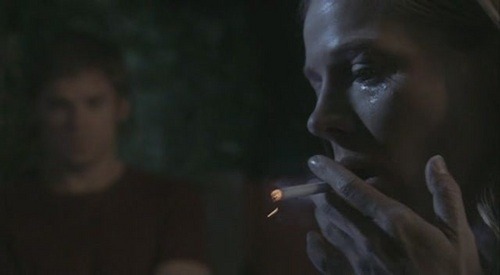
Great Characters: Rita Bennett (Dexter)
People tend to acknowledge “strength” only in certain ways. Muscles like steel cables. Incredible skill in combat. Special powers or weapons. Unstoppable drive to never falter or fail. Generally, we think of strength as the ability to win. The one who stands at the top of the hill. A person who can never be fooled or deceived. The best of the best. It’s definitely a very masculine view of strength, but not the only definition of it. Some of the strongest people come off as the frailest and least threatening. In the long history of serial killers, violent criminals, ex-black ops agents, and psychotic prophets; Rita Bennett (later Morgan), played flawlessly by Julie Benz, is generally not the first character people think of when it comes to “Dexter’s Most Formidable Opponents”.
This is because viewers generally associate Rita with “the meek/naive/ditzy/stupid woman who never realized she was dating a serial killer”. The fact of the matter is, for the four seasons we knew Rita on Dexter, she never came within 50 miles of guessing her boyfriend-later-husband Dexter Morgan was the “Bay Harbor Butcher”. Something we knew, as viewers, from the very first scene of the show. Each episode we’d see Dexter lie to Rita and she never thought twice about it, taking everything he said at face value and never suspecting anything. Thus our view of Rita tended to be of her as clueless and none too bright.
This is because people mistake vulnerability with weakness. Rita Bennett was a single mom of two still recovering from the physical, emotional, and psychological wounds of a violently abusive relationship. Life has not been easy for Rita, in fact it’s been harder on her than most. It’s so easy to see her as victim instead of what she really is; a survivor. Rita has been through Hell and then some, and she has the scars to prove it. She’s still standing though, and she hasn’t lost any of her ability to love. Maybe it takes her a lot longer to reach the point where she’s comfortable with intimacy. So f***ing what, she doesn’t owe any man sex unless she wants it. The fact that Rita can be as sweet and understanding and trusting of Dexter as she is is because he’s earned it. Astor and Cody are a non-negotiable part of Rita’s life. Anyone she thinks could hurt them in any way doesn’t get in the door. Dexter, for all his sociopathic faults, loves her kids and will protect them as fiercely as if they were his own. For that kind of a man, Rita will give the world.
That’s the side of Rita we see the most. The side who has finally caught a break and found a guy who won’t break her heart or her bones and won’t abandon her or her kids. It’s a side Rita hasn’t gotten to show in a long time, having had to be so strong for so long. Naturally, it’s a little awkward. She overcompensates a little, she misses a little, she tries a little too hard sometimes. But the amount of happiness Dexter brings into her life is like finding the Promised Land. Rita finally has the freedom to be vulnerable with another person again, and that feels amazing. It’s amazing for Dexter too, to the point where he doesn’t even realize that, in the square-off between a serial killer and a single mom, he blinks first. Dexter changes his life for Rita, because she made it clear during their unexpected pregnancy that she will face the trials of being a single mom again without hesitation if she suspects Dexter couldn’t commit.
We spend so much time with Rita in that well-deserved Promised Land that we come to think of it as her entire personality, as opposed to the side she only shows Dexter. Come season 2 though, we get to see a different side of Rita. The instant she suspects Dexter might be an addict, the defense drive kicks in and the walls come up. Dexter, having no way to explain his behavior (aside from confessing that he’s a serial killer, not a junkie), is out. Out of Rita’s house, out of Astor & Cody’s lives. It’s so jarring and abrupt that even Dexter is thrown. All the charisma Dexter has spent his life mastering fizzles in the face of this “Smoking Rita”, who will listen quietly to whatever excuses he has, then ask “have you been to an NA meeting”. And the only single word in the entire universe that will let him in the door again is “yes”. Without that word, there is no Dexter Morgan.
The strongest people don’t fight at all.
I don’t think even Dexter ever truly understood how strong a person Rita was. That said, when it came to his and Rita’s wedding and her mother passive-aggressively congratulated her with “3rd time’s the charm”, she lied so quickly and with such skill that only a master liar like Dexter spotted it. But for all that he’s lied to Rita about and will continue to lie about, he makes the decision to leave that stone untouched. And thus Rita Bennett is given one of the rarest gifts for any fictional character in a successful series; a secret all her own.
#great characters#rita bennett#rita morgan#dexter morgan#julie benz#dexter#characters#rant#single mom#strength#survivor
63 notes
·
View notes
Photo
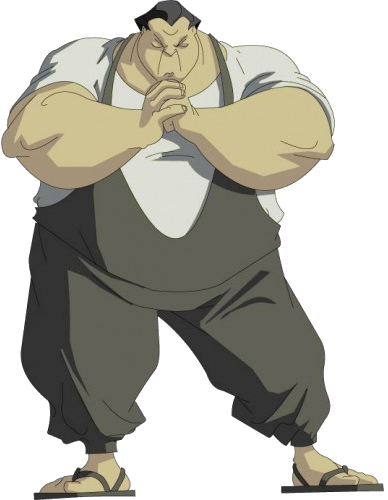


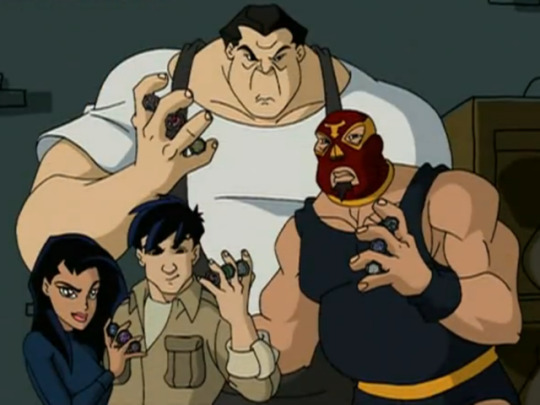

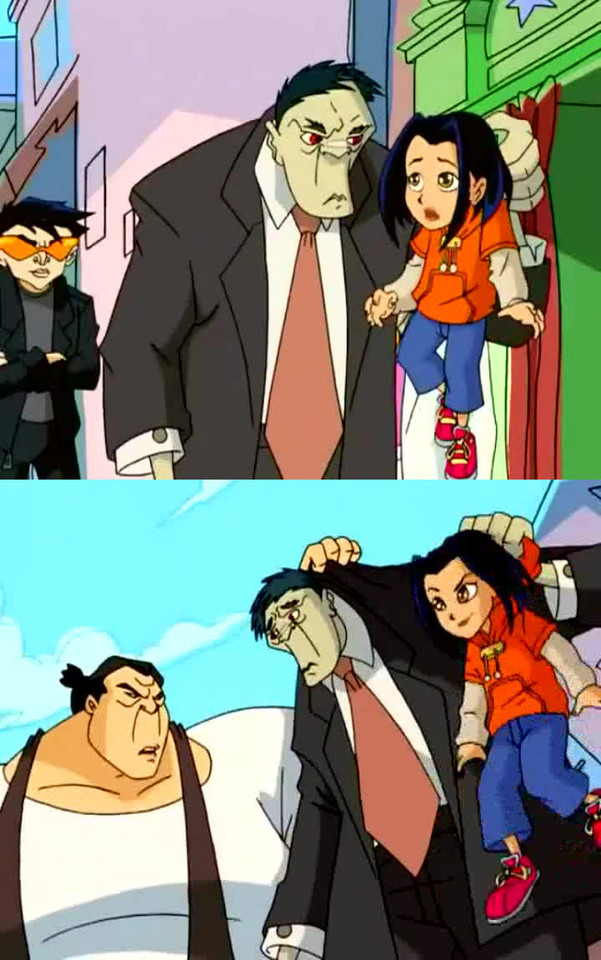
Great Characters: Tohru (Jackie Chan Adventures)
Everyone has their favorite character types. The Lone Gunslinger, the Wandering Samurai, the Wacky Sidekick, the Wise Mentor, the Maniacal Villain, and on & on. One of my favorite character types is an unusual one, “Developed Henchmen”. Characters who begin as dumb muscle but develop into fully rounded individuals. That love originated from one character from the animated series Jackie Chan Adventures, Tohru.
Tohru began as what you’d call “the big thug”. Literally, he’s about 8ft tall and 6ft wide of equal parts bulk and muscle, working for a criminal enterprise as their enforcer. He is who Valmont calls when he wants things done. He is shown in the opening theme as the first Huge Threat for Jackie to take down in a single (albeit painful) punch. His role in any episode is to do what Valmont’s other, less reliable henchmen can not; get results. Dirty work, heavy work, and generally Big Work. Tohru is not a talker. The majority of his lines in the first season are less than four words.
“The shield.”
“The talisman.”
“The pig.”
“What?”
“Chan.”
“I hate fish.”
“Mmm. Peppy.”
That said, the main motif for Tohru’s character is to, somewhat humorously, add weight (both figuratively and literally) to any situation. And it works. For having the losing record he does against the Chans, he is never seen as a threat to be taken lightly. Tohru’s involvement always means things just got a whole lot harder. Be it a fight, a chase, or a pie-eating contest.
Following the end of the first season, where Tohru is ordered by Valmont to fight a Demon Sorcerer and is finger-flicked across a room, through a set of doors, down a hallway, into an elevator shaft, out of an elevator shaft, out of a skyscraper and into a neighboring skyscraper, Tohru begins to question his choice of employment. In his first act towards repairing the damage he’s helped cause, he gives Uncle the information needed to address this new threat.
“The demon’s name is Shendu.”
There’s no interrogation, no trickery, and no obligation demanded in exchange for the Chans treating his wounds, it’s Tohru’s own decision to help. And with that one single action, Tohru starts a new life with the Chans.
It is in many ways like his old life. He is still often used for his size and strength against magical and non-magical threats. However, in a surprising turn, Tohru also begins learning Chi Magic from Uncle. As the series progresses, the amount of time he spends fighting decreases, while the amount of time he spends doing research, learning spells, performing rituals, working in the shop, and engaging in casual conversation increases dramatically. Some of it is used for comic effect. It adds a strange and humorous tension to see a giant man holding a small pufferfish between his fingers speaking magic words rapidly. The fourth season brings Tohru even further into the forefront as he, being of Japanese heritage, must be the one to create the spells, rituals, and potions needed to combat the Oni Generals and their tribes of Shadowkhan, not Uncle. He succeeds, and while Tohru may never be seen as the formidable magic expert Uncle is, he ends the series as the one who deduces the method of banishing the demon threat once and for all. Tohru’s last scene is receiving the title and rank of “Chi Wizard” by Uncle. It’s an incredibly proud last note for a character who began as just a Big Thug.
Between that start and end, Tohru remains a prominent character in the series, appearing in more than 3/4 of the episodes. Again, somewhat humorously, he never has a small part in an episode. The character has such a presence that even the smallest acts make a big impact. Not just fighting, but listening to Jade talk about her problems, helping Jackie look after Jade, helping Uncle with the shop, etc. Each of the Chans come to see Tohru as more than just size & strength. Uncle sees motivation to learn and respect for one’s elders, two traits in short supply around the shop. Jackie sees responsibility and humility, traits he wishes to teach Jade. Jade sees someone who knows what it feels like to be invisible to other people. As for the nature of the show itself, if someone can knock Tohru aside, that’s all the proof we need for a higher level of “Bad Day”.
He builds a relationship with Jade that’s particularly powerful. Jade, who loves her uncle Jackie and can always think of ways Tohru can help, pushes him to get involved and help keep everyone safe. Tohru, knowing what Jade means to Jackie as well as what it means to have no one listen to you, is always there for her, looks out for her, believes in her, and tries to be the good guy she thinks he can be. In such a short time, Tohru has become protective enough of Jade that he at one point threatens to turn his former master Valmont inside-out if anything should happen to her. This culminates in one of Tohru’s greatest moments in the J-Team’s first official mission to a Shady Martial Arts Tournament, which goes very, very, poorly. The tournament is such unfamiliar territory for the group that each member ends up a combination of defeated, crippled, or knocked out. This leaves Tohru as their last chance of gaining access to the inner workings of the operation, in a fighting format he insists he is, of all things, “too small” for, Sumo. Jade does everything she can to teach and encourage Tohru, believing he will do great. The show does a spectacular job of showing just how debilitating Tohru’s reluctance and lack of self-esteem can be, with Jade knocking him clear across the room and onto his butt. His reluctance proves well-founded, as his opponent is to Tohru what a Large Fries is to a Small. Tohru remembers Jade’s advice to, as someone so small and easily dismissed, “think big”, and in a colossal display of sheer determination, Tohru lifts his opponent clear off the ground, teeters uncertainly, then brings the champion sumo down with a CRASH that lifts everyone off the ground. It pays to listen to Jade.
We come to see the big bad Tohru as a gentle man who seeks only to be accepted and appreciated. A man who gives everything he can to help others, and always puts his needs behind theirs. He doesn’t like attention or making a big scene. Or fish. He much prefers the smaller, quieter things in life. Like kittens. He doesn’t mind doing chores or menial work around the shop, and actually seems to enjoy the more mundane lifestyle. Now, I don’t want it to seem that this means Tohru has an inherent sense of subservience. Tohru is not, nor is he ever treated, as a slave or servant. The situation is never one-sided with Tohru doing everything while everyone else does nothing. He is a paid employee of Uncle, an apprentice in Chi Magic, an agent for Section 13, and a valued member of the J-Team. Tohru definitely struggles with self-esteem, possibly a result of his upbringing from his demanding mother, a short woman with big expectations from her son that he never seemed to be able to meet.
The Chans have shown they are willing to traverse the globe to support him, including an episode in which Tohru is believed to be the reincarnated Chosen One of an ancient order. He is barred from doing any manual labor, including carrying his own suitcase off a plane, which clearly bothers him. For an introvert, there is nothing worse than getting so-called “special treatment” while everyone else has to struggle. Tohru is the kind of person who prefers being treated equally, as opposed to treated differently. This may be part of why he values Jade’s friendship so much. She sees him as a friend and a person, not just a giant. The first and often only thing people notice about Tohru is his size, and as tough as he is, there are moments where he clearly wishes he were more normal. In Jade’s eyes, Tohru is a regular guy, and that means more to him than anything in the world.
All this development turns that most disposable of characters, the “big henchman” into a vital and essential part of the dynamic, the story, and the entire world of a show. While I don’t expect this level of development from every program I watch, I always have a soft spot for any henchman character given a chance to do something besides grunt, fire wildly, be a dick, and/or get beat up. I believe in a great series even the lowliest of characters can make a difference, and if a series can’t use a character more than once, any success it finds can only be temporary.
#great characters#tohru#jackie chan adventures#jackie chan#j team#jade#chan#uncle#jackie#valmont#sumo#henchman#henchmen#good writing#good characters
128 notes
·
View notes
Photo

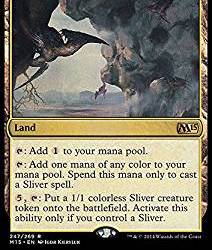

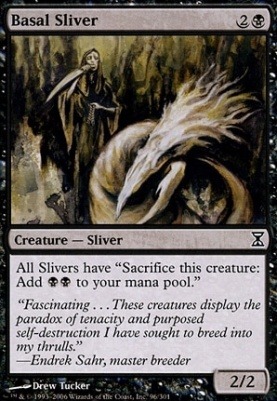
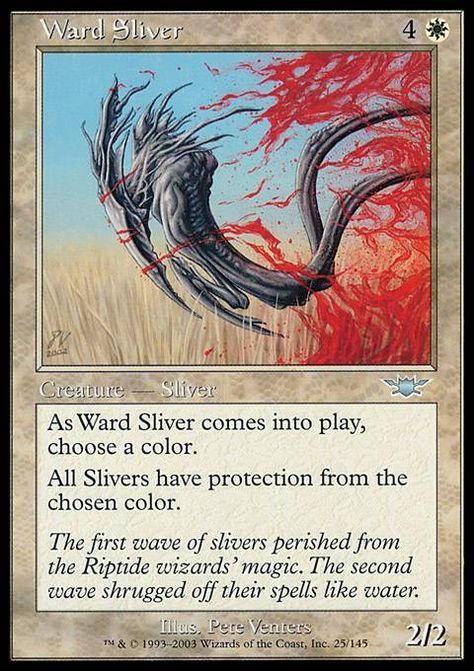
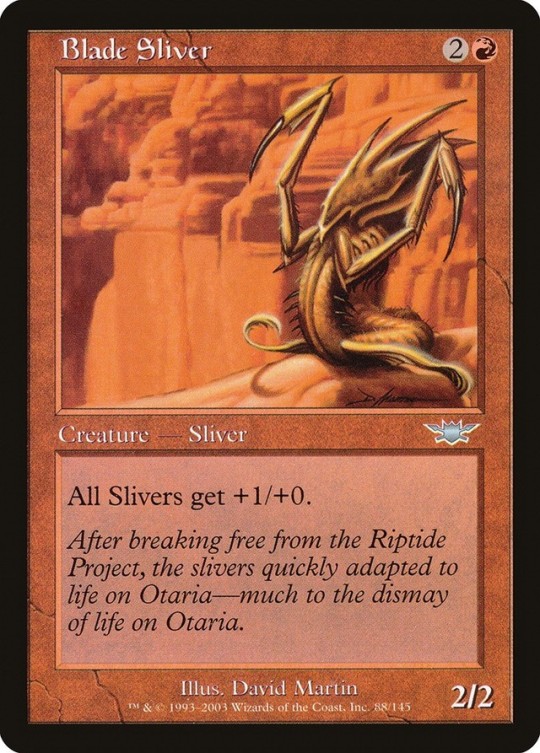
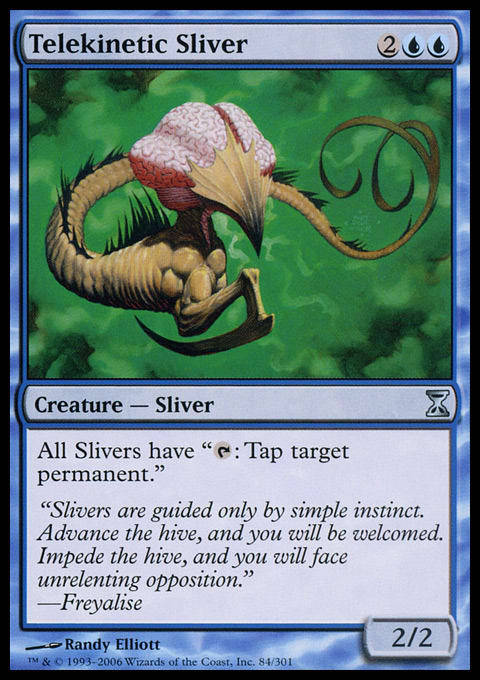
Welcome Back, Slivers
A Love Letter to the Hive from a Magic: The Gathering Player
I’ve been into card games since I was about 8 when Yu-Gi-Oh first came to American television. Around Middle School, I started hearing about Magic: The Gathering. Mostly from my fellow card game players. My main hesitance stemmed from a bad early exposure to it. Namely, being told it was better than the game I loved, the game I loved was stupid, and when I did learn the rules and give it a try my opponent gave me scraps to fight against a fully fleshed-out deck it had no chance against. So, not the best introduction to the game.
Years later, in college, I met a group of guys who I could play card games (still Yu-Gi-Oh) almost constantly with. As in, we literally played almost every day for anywhere from 2-9 hours. I have that group and card games to thank for making my college experience a fun one and keeping me out of trouble. Around Junior year, some of our players made the transition to Magic. Wary from my bad experiences with people who said it was the “better” game, I was resistant to join. In the end though, I trusted these guys enough not to take advantage of me and use this as an excuse to tear the newbie apart to feel superior. You’ll have to remember, at this point we were playing card games so much, we thrived on entertainment and whatever kept things exciting. 2 vs 2, 5 vs 5, 8 vs 8, 3-way free-for-all with each player using two randomly assigned decks from our combined collections, etc. If these guys wanted to keep playing, we had to go in expecting a good game. So they assembled me a deck from their spare Magic cards (Mono-Green, I believe) and we started playing. I rarely won, granted more from my own lack of strategy than anything.
It was still just hard for me to really get into the game with a deck someone else had made for me. So, in my spare time when they played more competitive games, I would go through their spares and look for anything they were willing to part with. A few things I had to concede to Magic over Yu-Gi-Oh was the quality of art on the cards. These cards looked like real paintings and fantasy worlds, not just increasingly buffed-up and armored combat monsters. As an avid doodler and fantasy enthusiast myself, I found cards I could enjoy just for the artwork, even if they weren’t particularly good (Twisted Image was and still is one of my favorites). These cards also had flavor text, little snippets of story info, references, or even jokes that Yu-Gi-Oh parted ways with around the time I turned 9. I started looking for an idea to build around, but since at the time my favorite fantasy creature was unanimously dragons, something which are rare and hard to come by in beginner Magic and thus very unlikely to be simply given away to a newbie, I had to look for something else.
I found a Sliver. This weird little critter with a pointy, eyeless head, a snake-ish body ending in two tails, and one clawed arm. Unusual, but it had an ability that I couldn’t ignore; it gave every Sliver its ability to bring a dead Sliver back to life. I kept looking and found a few more. Nothing special, just more variations on this simple design that all had one ability that they then gave to every other Sliver. It sounded perfect! At first my friends were pretty indifferent to my grabbing a couple Slivers among other things, but when it became clear I wanted to build a whole deck around them, the groanings began. See, what I didn’t realize is that Slivers have a nasty reputation among a lot of Magic players. Anyone who plays them will find themselves at the center of a lovely game known as “Everyone Kill the Sliver Player”. The reason is because, well, they work. Slivers, left unchecked, have a tendency to dominate the game and become unstoppable. Hence Sliver Decks are, while not officially banned, very hated.
Basic MTG 101; the way a Sliver Deck works is basically by playing as many Slivers as possible. Each one has a unique ability that it gives to every other Sliver. 1 Sliver has 1 ability, 2 Slivers have 2 abilities, 5 Slivers have 5 abilities, and so on. The math adds up fast. Storywise, Slivers function kind of like the Aliens. Operating via a Hive Mentality, directed by a Queen, existing mostly to hunt, eat, and multiply, often to the misfortune of anything else that happens to live in the world. They’re not actually evil, they aren’t bred for pure destruction like the Alien, they don’t kidnap victims to be implanted with baby Slivers that rip out your chest to painfully kill you. They’re more like ants. If ants were much bigger and did things besides bite. They’re just doing ant things and everything & everyone else just happens to be in the way. Hence, conflict.
I told my group I wasn’t looking to make some kind of monster. I was using scraps from their spares, almost nothing above a common rarity. Few of my friends even had any Slivers that could really be considered problematic, but the stigma and fear of runaway Slivers prevailed. There’s a Sliver for almost every single ability in the game, which means they can theoretically do just about anything. The terror of what that implies goes deep in a lot of Magic players, so I had to do whatever I could to prove to them I wasn’t trying to kill the fun of competition with a super serious deck.
I liked the idea of a simple design with several dozen variations from an artistic standpoint, and having a deck full of cards that each explained an ability or dynamic of a game I was still learning was extremely helpful. Their flavor text also crafted a simple enough story that I could follow without having to know too much MTG mythology. I loved Slivers because I thought they were cool, not because I thought they would win. So they became a sort of side project for me as I grew more & more interested in Magic. Eventually, my friends came around and started looking for other common Slivers in the spare cards of their friends and in card shops for me to add to my collection, wary not to give me anything too strong for fear of what might happen if the Slivers came fully online. I was happy with my little Black/White Sliver Deck. Crypt Sliver, Clot Sliver, Mindlash Sliver, Metallic Sliver, Plated Sliver, Armor Sliver, Lymph Sliver, Basal Sliver, Spectral Sliver, Frenzy Sliver, and the one nastier card my friends permitted me, Ward Sliver. Surprising everyone including me, the deck worked pretty well in our little group. It wasn’t unstoppable like my friends feared, but it was damn effective.
I have fond memories of the Slivers because it made the game fun for me when for so long it had just been a negative experience. They helped me get more interested in the game I now love and broke down a lot of barriers. My Sliver Deck reminds me of the days when I was still a new player and was collecting cards simply because I liked them. For that, the Slivers will always hold a special place in my heart. And nowadays, when I’m on a particularly unpleasant losing streak and my friends are getting a little too overconfident, I have a fully online Sliver Deck that reminds them how quickly the tables can turn. And they can hate it all they want.
#mtg#slivers#sliver#sliver queen#magic the gathering#I love you Slivers#card games#childrens card games#welcome back
1 note
·
View note
Photo

Great Moments in Childhood: Rocket Power
“Bruised Man’s Curve” (2001)
This is one episode of Nick I’ll never forget and never stop praising.
Quick background, Rocket Power was a Nickelodeon show in the late 90s-early 2000s about 4 kids in California playing extreme sports. I don’t think I’ve ever actually said that out loud. It’s weird, you think of shows from your childhood completely differently as a kid than as an adult. I’ve never actually had to describe Rocket Power to someone because, well, anyone I’ve ever mentioned it to knew what it was. It was awesome. If pushed to describe it further, one could say it was the pursuit of awesome. A group of kids trying to reach greater and greater heights in every kind of athletic event or competition imaginable.
Among the greatest of these heights was Bruised Man’s Curve. A mountain-board course of such cruel design that no one has ever made it down without wiping out. And as anyone who watched Rocket Power knows, nothing attracts Otto Rocket more than the words “no one has ever”. Having already conquered “Scab Mountain” effortlessly in this first & only episode of their mountain-boarding career, Otto is drawn to, as always, prove himself to be the best. It’s a familiar formula within the show. A new kid dares Otto, Lars dares Otto, a challenge dares Otto, Otto dares Otto, etc; and Otto throws himself at it with everything he’s got.
Let’s be frank. Otto is technically 10-11 and yet in the 4 seasons the show ran we watched him conquer almost every extreme sport in existence at that time, including some relatively brand new. Before he reached 11 he’d already accomplished more than most athletes probably ever will. It goes without saying that his level of skill is hugely, if not ridiculously exaggerated, particularly in comparison to his age. That’s what made Bruised Man’s Curve such a milestone for the character. Now, this was not the first time Otto had encountered a challenge beyond his abilities. Truthfully, Otto’s level of self-confidence and ego has caused him to throw himself against countless challenges he has no business taking on. He has broken promises, he has broken rules, and he has broken bones, yet he has defiantly refused to admit fault for any of his devil-may-care daredevil behavior. The kid does not know the meaning of “impossible”, “off-limits”, or “potentially fatal”.
What made this episode so special was that this challenge was none of those things. Bruised Man’s Curve was fiendishly unpredictable and unforgiving, yes, but it was not impossible. Sam actually took the time during Otto’s many unsuccessful practice runs to do the math on the mountain. It could be done. But after weeks of being punished by the unpredictability of every crag, every rock, every pit, and every abrupt change in the course, Otto was ready to admit defeat. Impossible tricks are one thing, failing is just an indication that you didn’t do it right, in Otto’s mind. Off-limits doesn’t mean much either, just that adults said you couldn’t for some dumb reason. And potentially fatal just means you need to be good, unlike some people (Shoobies ruin everything). This was the first time Otto had to admit to himself that something was too hard. That was a staggering blow to his confidence. “Too Hard” was something that happened to other people, but he’d come at this mountain from every angle with every ounce of his skill and it had tossed him around like a bean bag.
When the day of the challenge came, Otto wasn’t ready. He wasn’t afraid of Lars, he wasn’t afraid of being mocked, he wasn’t afraid of anyone thinking less of him. He was afraid of another beating from Bruised Man’s Curve. So Otto Rocket did the one thing he’d never done before in his life; walked away.
Not a damn thing in this world was going to convince him to go down that mountain again.
We talk about great TV shows and great lessons certain episodes taught, but I don’t think any episode of any show ever got across the idea that “no one can make you do something you don’t want to do”. Because being able to walk away and not care what people think is hard. Seemingly impossible sometimes. We say we don’t care what people think, but the truth is we often do. Especially when it’s our friends or peers. When people you care about are encouraging you, even looking out for you, there’s this sense that you can face anything as long as they’re there for you. That can be admirable, but it’s not absolute. You should still be able to say no.
There’s not a trace of cheesiness or corny morality in this moment for Otto. Hearing Lars say the words “scared” is one of the single most effective triggers for Otto’s suicidal masculinity in the entire world. And without pausing, slowing down, or raising his voice Otto simply says, “what does it look like I’m doing”.
Let me reiterate this again, because it’s what makes this moment so shocking for everyone who watched this show, Otto is STUPID. Stupid talented, stupid proud, stupid stubborn, stupid confident, stupid competitive, and stupid stupid stupid kid. He will throw himself face-first at “impossible” until he is a bloody mess. He will challenge an “off-limits” sign for a bomb testing field. He will not be satisfied with “potentially fatal” until he seen a living thing die. He has lied, he has cheated, he has exploited, he has insulted, he has provoked, and he has endangered his friends so much in his ultimate goal of proving he’s the best. This kid, has done so many dumb things, for such dumb reasons, his father should have broken every board he has in half at age 5. That same kid has just walked away from his pride without a regret.
True to form, Lars starts laughing at Otto’s cowardice. Holding his head, he steps backwards- onto his mountain board. And goes down what’s gotta be the roughest ride in Bruised Man’s Curve’s history. One-footed, backwards, and unable to steer. Upon his inevitable and painful crash, he cries out in anguish- over a small scrape on his leg. Otto’s friends give him the thumbs up from the bottom of the mountain. Lars is fine, just being a baby.
Something happens to Otto in that moment. Maybe it was seeing someone go down the mountain in the worst way imaginable, maybe seeing that no matter how bad the mountain was it still wouldn’t kill you, maybe it was seeing Big Bad Lars whine about a little scratch, maybe it was seeing that he’d handled failure better than Lars, maybe it was just having the pressure of being forced into something lifted off his shoulders, but Otto took one last go on Bruised Man’s Curve. Every crag, every rock, every pit, every abrupt change and every devious trap in the unforgiving landscape. Otto took them all, and at the very end....
M A J O R A I R !
Victory.
It wasn’t the highest Otto’s ever gone, nor the fastest, or even the most impossible thing he’s done (he has actually accomplished a couple impossible stunts by accident or cheating), but it was the most gratifying patch of big air he’d ever tasted. The fruits of hard work, practice, and lots of failure came through for him when it counted. More than that, he’d also come through for himself. It wasn’t pride or skill or even the need to win at all costs that got him down that trail. It was training, focus, lots of trial & error, and also a little bit of growing up. What victory could be sweeter?
#great moments#nick#nickelodeon#rocket power#otto#otto rocket#bruised man's curve#bruised mans curve#mountain boarding#childhood#90s#tv shows#major air
14 notes
·
View notes
Text
Important Source Material.
know the difference
It has come to my attention that many people mistake wyverns for dragons, so here’s a post to help you remember
Dragon: 4 legs, 2 wings
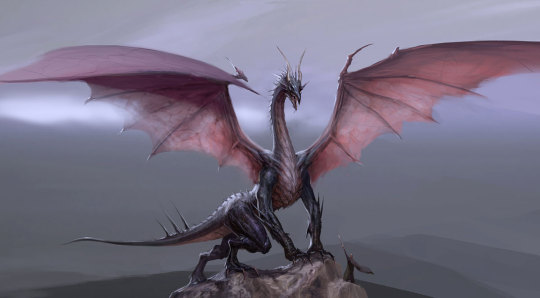
Wyvern: 2 legs, 2 wings

Drake: 4 legs, flightless
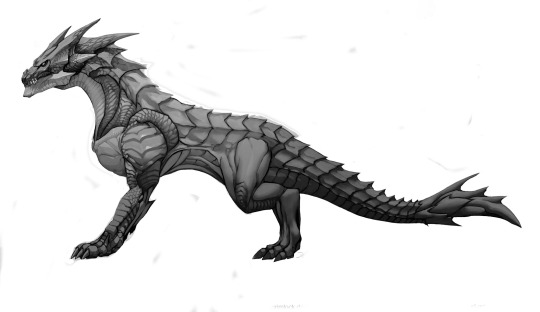
Wyrms: long snake like body with no appendages, can also appear as a traditional Chinese dragon with 4. Legs and no wings yet can fly

Amphithere: 0 legs 2 wings, can be feathered
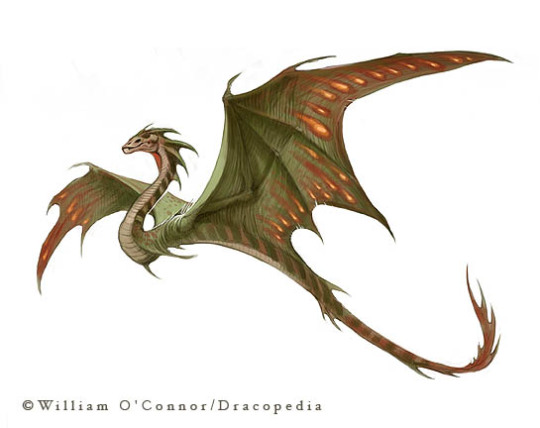
Lindwurms: 2 legs, 0 wings, long body
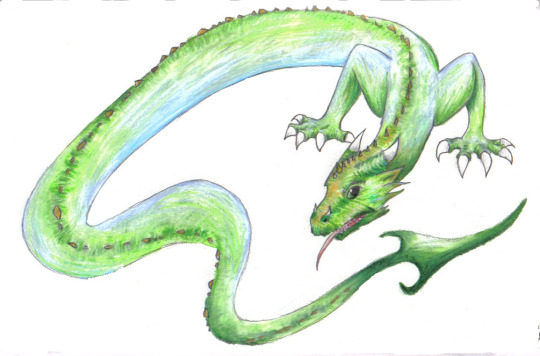
Luck dragon: 4 legs, no wings, can fly, long body, furry with dog like face
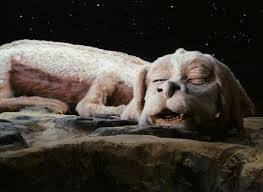
Komodo dragon: 4 legs, no wings, real
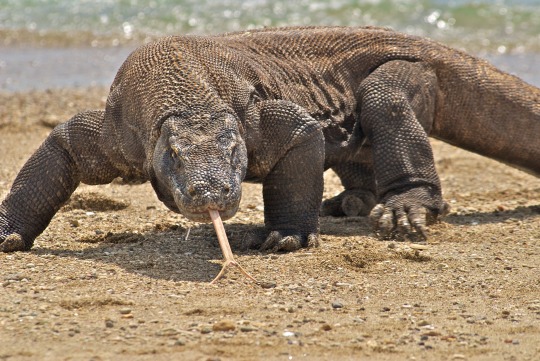
Bearded dragon: 4 legs, 0 wings, often kept as pets

322K notes
·
View notes